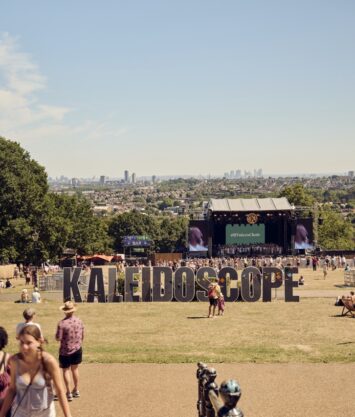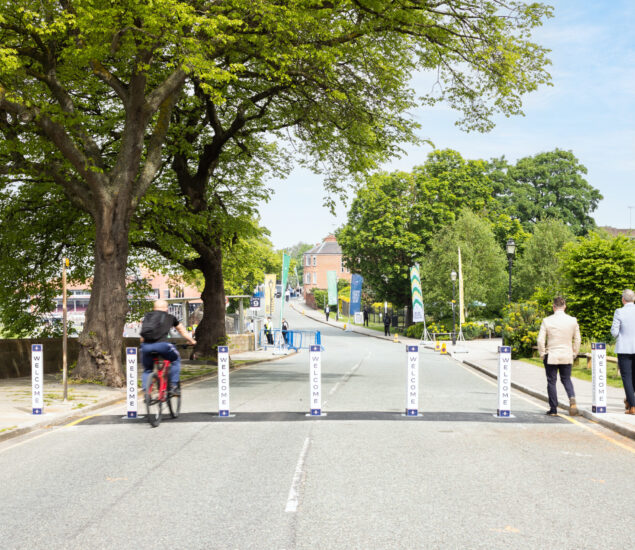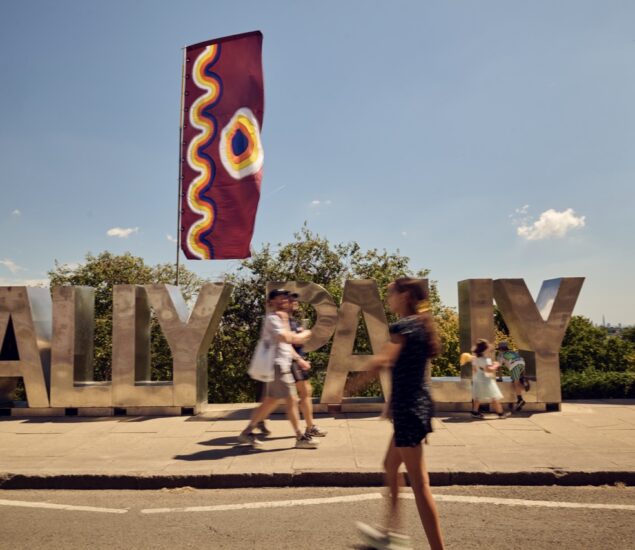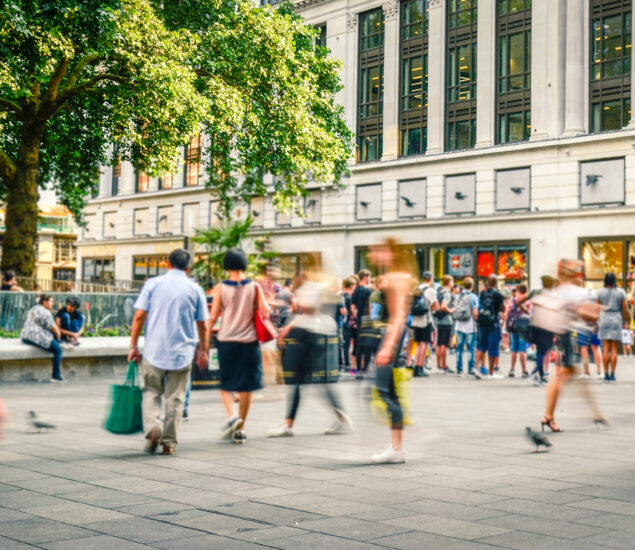The most effective hostile vehicle mitigation doesn’t look like security at all. Here’s how landscape design creates protection through distance.
Good urban security shouldn’t announce itself. Cities need both protection and openness, and the tension between these needs has pushed designers towards an important realisation: the distance between a vehicle and its target isn’t just empty space. It’s working space.
NPSA guidance on public realm design makes this explicit. Distance is a protective measure in its own right, and the designed landscape can create it.
The Physics of Approach
A vehicle approaching a target builds kinetic energy through acceleration. On impact, that energy transfers into the target – and into whatever’s trying to stop it. The faster the vehicle, the greater the force.
This creates straightforward opportunities. Reduce approach speed, and you reduce impact force. Physical barriers can be lighter and more discreet when they’re managing lower energies. Street furniture that wouldn’t normally count as security infrastructure starts to matter.
Attackers favour practical vehicles. Research shows they choose everyday vans and light truck sar more often than the 40-tonne lorries that dominate security specifications. These smaller vehicles respond to the same traffic calming measures that manage daily urban movement.
Design That Slows Without Showing
The NPSA’s Public Realm Design Guide identifies traffic calming as a protective security measure. Horizontal deflections, such as bends, chicanes, and narrowings, force vehicles to slow. They do this whether the driver intends harm or is simply making a delivery.
The built environment already shapes vehicle movement constantly. A bend in the road requires deceleration. Planters positioned to create a gentle curve slow approach speeds. Street trees spaced to define a lane make speeding uncomfortable. Changes in paving material signal transition and prompt caution.
None of these elements need to declare their security function. A seating area that creates a natural deflection serves people whilst managing vehicle paths. Trees that channel movement provide shade and define space whilst limiting speeds. This is what NPSA calls holistic hostile vehicle mitigation: protection woven into the fabric of good placemaking.
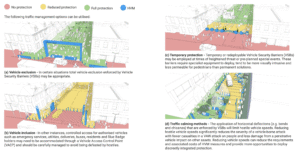
From the publication Public Realm Design.
Layered Protection
Protection builds through the site. A vehicle navigating a deflection sheds speed. Surface changes slow it further. By the time it reaches any physical barrier, the landscape has already done significant work.
This matters particularly for retrofits. Urban sites rarely have room for substantial new infrastructure, but they almost always offer opportunities to reposition elements or add features that influence movement. The cumulative effect of several modest interventions often exceeds what a single large barrier could achieve.
There’s a flexibility advantage too. Fixed barriers struggle to adapt as threats evolve or building uses change. Speed management through landscape design can be adjusted more readily – intensified during high-risk periods, softened when threat levels reduce.
What the Numbers Show
Distance-based protection delivers measurable outcomes. When vehicles must navigate obstacles, approach speeds drop. Every kilometre per hour removed buys response time. The cumulative effect of multiple speed-reducing elements significantly improves protective performance compared to relying on impact barriers alone.
The principle works across threat types. Vehicle-as-a-weapon attacks depend on speed and surprise. Vehicle-borne explosives need to reach their target. Distance and reduced velocity limit both.
NPSA guidance notes that adequate blast stand-off distance can be enforced through HVM measures and traffic management. The designed environment doesn’t just slow vehicles – it positions them where they cause least harm if they detonate.
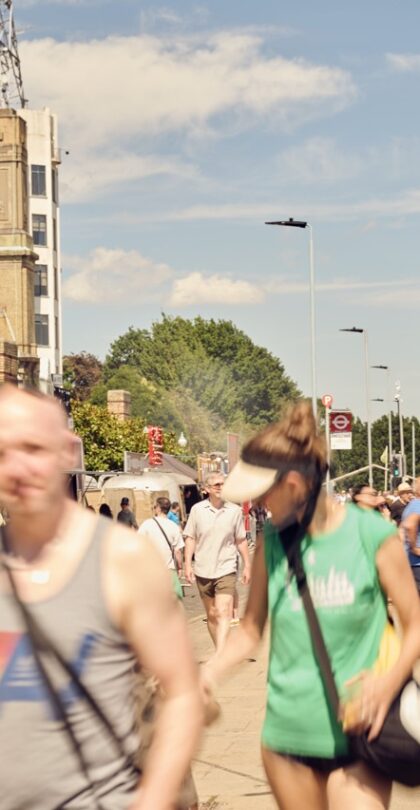
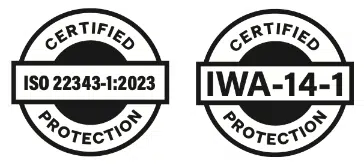
Beyond Barriers
Traditional security thinking defaults to barriers at the perimeter. This works in some contexts but misses the opportunity to make the entire site contribute to protection.
When distance is recognised as protective, landscape elements become security infrastructure. Seating, planting, water features, level changes, paving patterns – all influence vehicle movement. They do this whilst serving their primary purposes: making spaces that work for people.
NPSA guidance emphasises this integrated view. Designers can ensure HVM measures integrate seamlessly into environments, providing proportionate security whilst creating appealing, functional public spaces. The role of design extends from site masterplanning to detailed physical restraints.
This produces outcomes neither pure security nor pure placemaking achieves alone. Spaces become more protected and more pleasant simultaneously. Security measures become welcome additions because they serve multiple purposes people value.
Good protection doesn’t read as security — it reads as good design. Every considered metre contributes to that outcome.
This article draws on NPSA’s Public Realm Design Guide: Hostile Vehicle Mitigation

